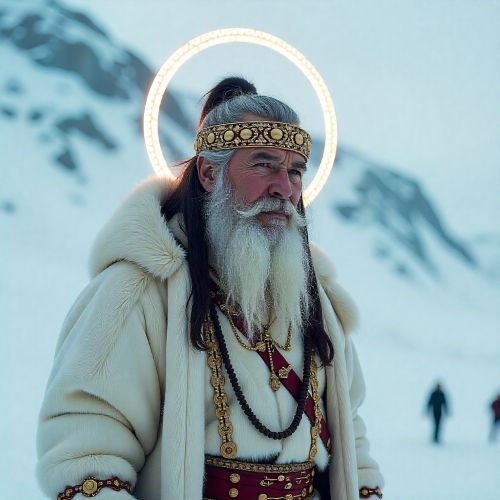Sakha Mythology
Sakha mythology, also known as Yakut mythology, represents one of the most profound and spiritually intricate traditions of northern Asia. Rooted in the ancient beliefs of the Sakha people of Siberia’s Yakutia region, it embodies a worldview shaped by extreme natural environments, shamanic practices, and a deep respect for the spirits of the land and sky. Sakha mythology reflects the enduring relationship between humans and nature, portraying the world as a sacred network of living forces guided by divine order. The myths, passed down through generations through storytelling, epic poetry, and ritual song, serve not only as explanations of the universe’s origins but also as guides for maintaining harmony with the spiritual and natural realms.
At the heart of Sakha mythology lies a layered cosmology known as the Aiyy worldview, dividing the universe into three interconnected realms — the Upper World, the Middle World, and the Lower World. The Upper World is ruled by benevolent sky deities known as the Aiyy, led by the supreme god Urung Ai Toyon, the creator of light, order, and all life. The Middle World is home to humans, animals, and guardian spirits, while the Lower World contains dark and chaotic forces known as Abaahy. The balance between these realms is maintained through ritual and respect for nature. Shamans, or oyuun, serve as intermediaries between the worlds, entering trance states through drumming and chanting to communicate with spirits, heal the sick, and protect their people. Every aspect of existence — from a flowing river to a passing wind — is believed to have a soul or ichchi, making the natural world a living, breathing manifestation of divine presence.
The myths of Sakha mythology are populated with gods, heroes, and spirits that embody cosmic principles and moral lessons. Urung Ai Toyon, the white creator god, symbolizes justice and creation, while Aiyyhyt, the goddess of fertility and childbirth, blesses families and ensures the continuity of life. The Abaahy spirits, by contrast, represent destruction and suffering, serving as reminders of the constant struggle between order and chaos. Epic tales such as the Olonkho — the national epic of the Sakha people — tell of heroic warriors, divine ancestors, and spiritual journeys across the realms. These narratives are more than mere entertainment; they are acts of preservation, transmitting sacred knowledge, ethical values, and the deep spiritual identity of the Sakha people.
In the modern era, Sakha mythology continues to thrive as a cornerstone of cultural revival and artistic inspiration. Festivals such as Yhyakh celebrate the renewal of life and honor the Aiyy gods through song, dance, and offerings to the spirits of nature. Artists, musicians, and filmmakers in the Sakha Republic draw on mythological motifs to explore themes of identity, ecology, and spirituality. As global interest in indigenous wisdom grows, Sakha mythology stands out for its profound ecological message — that the Earth and all its beings are sacred, interconnected, and deserving of reverence. More than ancient legend, Sakha mythology remains a living spiritual philosophy, reminding humanity that balance, gratitude, and respect for the natural world are the true paths to harmony and survival.


